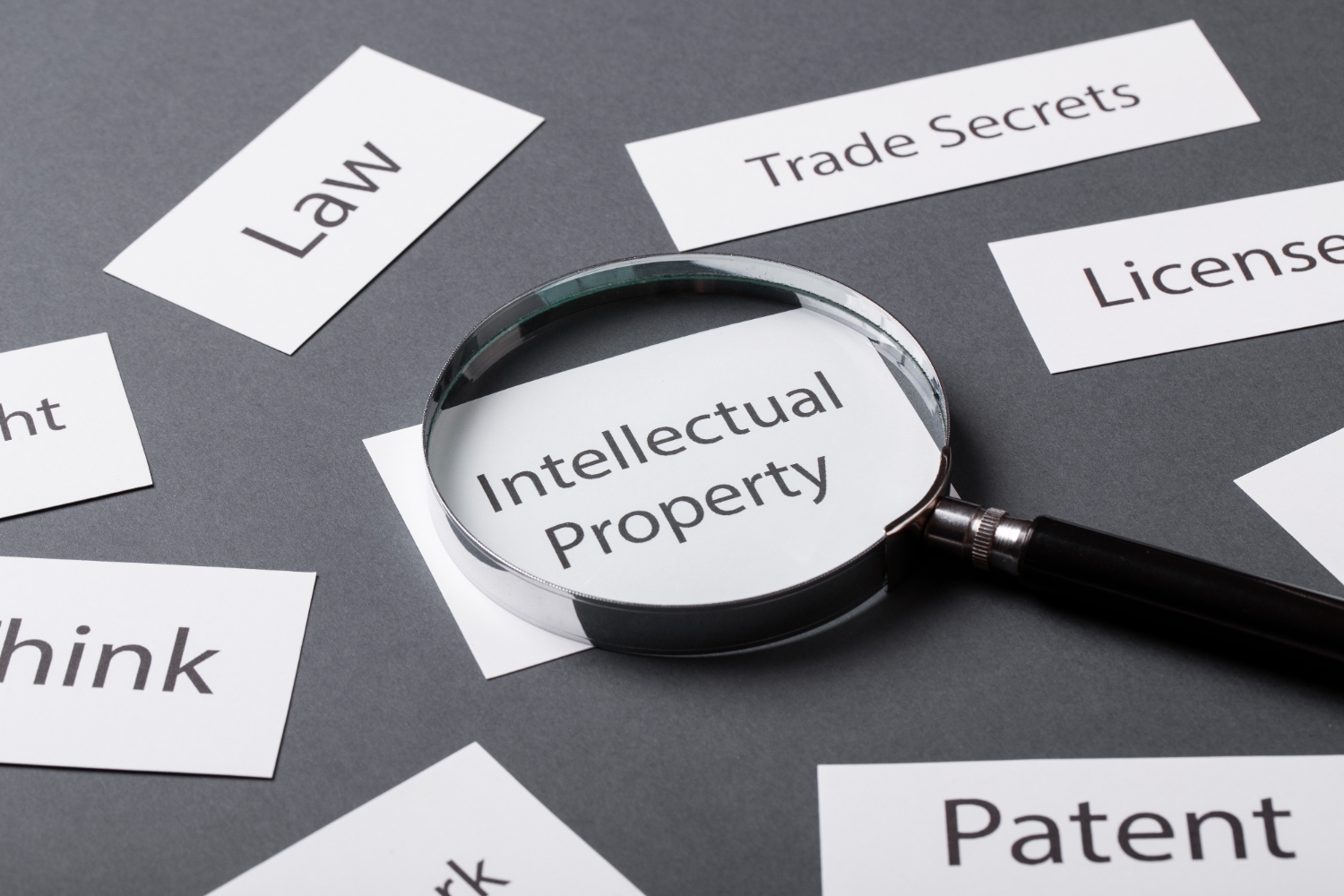
So, what exactly is a current asset? Simply put, it’s anything a business owns that can be converted into cash or consumed within a year. The importance of this classification runs deeper than finance jargon—it’s a way to gauge how agile a business really is. With inventory sitting in this category, it reflects not only what a company owns, but also what it can do in the short term to stay competitive and liquid.
What Is Considered an Asset?
Broadly speaking, assets fall into two categories:
- Physical assets are tangible things—things you can touch, move, or see. This could be your delivery vans, shelves stocked with products, or the building you operate out of. Even the desk you’re sitting at counts as an asset.
- Intangible assets are trickier to spot but just as valuable. Think about a brand’s reputation, intellectual property like patents or trademarks, or even software licenses. You can’t hold them in your hands, but they’re powerful drivers of business value.

Inventory Classification in Accounting
Inventory in accounting is the term used to describe items owned by a company just for use or sale in manufacturing. But inventory is not only one large heap of goods; it is well classified into three main categories:
- Raw Materials: These are the starting point—the basics. Think about rolls of fabric for a clothing brand or flour in a bakery. They’re the first step before a product becomes anything meaningful.
- Work-in-Progress (WIP): These are halfway there. A table that’s been sanded but not varnished or a car on the assembly line waiting for its final parts—WIP inventory is mid-production, not quite ready to hit the shelves.
Finished Goods: The final product. Ready to sell, ready to ship, ready to bring in revenue.

Many times, companies use an asset register, a tool that tracks inventory and value, to properly control this. This guarantees nothing slips through the gaps—no missing stock, no falsified statistics. Ultimately, inventory is more about what those shelves mean for the company’s bottom line than it is about what is on the shelves.
Correct classification and tracking of inventory gives leaders a clear picture of the short-term situation of a company, guiding their decisions on sales strategies, manufacturing, and expenditure.
Examples of Current Assets
These are the most often used examples of current assets together with their real meaning:
- Cash and Cash Equivalents
A company can have this most liquid asset. It covers actual cash in hand, money in bank accounts, and almost instantaneous investments like treasury bills. Just a moment’s notice will find it ready for use.

Money that customers owe to the company. For instance, accounts receivable shows the payment you are still waiting for but should soon be collected if you sold a good on credit.
3. Inventory
Inventory represents goods a business holds for sale or production. This includes raw materials, work-in-progress products, and finished goods inventory—the final products ready to ship to customers. Because these goods are expected to generate revenue within the operating cycle, inventory is a current asset.
4. Short-Term Investments
Investments that a business plans to cash out or sell within the year—things like stocks, bonds, or other marketable securities. They’re liquid but also earn a little extra return in the meantime.
5. Prepaid Expenses
Payments made upfront for things like rent, insurance, or subscriptions. While these don’t turn into cash, they’re considered current assets because they provide value in the short term
6. Supplies
Office materials, packaging supplies, or factory stock used in daily operations fall into this category. They’re consumed quickly and help keep processes running smoothly.
In short, current assets are what keep businesses agile and financially secure. They help pay short-term debts, fund operations, and provide breathing room when unexpected costs pop up. Without them, a business might have valuable assets but no ability to cover immediate expenses—and that’s where problems start.
Understanding Liquid Assets
Cash is the ultimate liquid asset—it is already in its most usable form. Because it can be sold quickly, usually within days, and with little to no loss in value, other assets—stocks or short-term bonds—are also said to be highly liquid.
Now, how does inventory compare? Inventory is classified as a current asset, but it isn’t always as liquid as cash or accounts receivable. Here’s why:
- Conversion Time: Turning inventory into cash involves several steps—it must first be sold, and then the payment must be collected. Depending on the business type and market demand, this can take days, weeks, or even longer.
- Value Risk: Unlike cash, inventory can lose value over time due to factors like market changes, obsolescence, or damage. For example, unsold seasonal products or outdated electronics may need to be discounted heavily, reducing their worth.
That said, inventory still plays a critical role in liquidity, especially when demand is steady. For businesses that move products quickly—like grocery stores or fast-fashion retailers—inventory can behave almost like a liquid asset. However, compared to cash or accounts receivable, it sits lower on the liquidity ladder.
In short, liquid assets offer immediate financial flexibility, while inventory, although essential, requires a bit more effort to convert into cash. Understanding this distinction helps businesses manage their resources wisely, ensuring they have enough liquid assets to stay agile and meet short-term financial needs.
Excess Inventory as Waste in Business Operations
Here’s why holding too much inventory can harm operations:
- Increased Holding Costs
To store, protect, and manage your inventory, it costs more the more of it you have. Costs for things like storage space, insurance, utilities, and labour all add up. These holding costs eat away at profits over time without adding any real value. - Risk of Obsolescence
Things don’t always keep their value. When there is too much inventory, especially in tech, fashion, or food, it can quickly become out of date, expired, or unsellable. Then, companies have to offer discounts or write off these goods, which costs them money. - Tied-Up Cash Flow
Inventory may be a current asset, but it is not cash until it is sold. Having too much stock locks up working capital that could be used for growth, paying suppliers, or dealing with unexpected costs. Keeping money in goods that haven’t been sold can make it harder for businesses to stay lean and hurt day-to-day operations. - Operational Inefficiency
Managing too much inventory can clog up workflows. Overcrowded warehouses make it harder to locate products, track stock, or maintain accurate records. This slows down operations and increases the likelihood of errors. Businesses that prioritise easy asset management often perform better because they streamline inventory processes and reduce unnecessary complications.
Excess inventory also throws the balance sheet from an accounting standpoint. Although inventory is considered a current asset, its actual worth relies on the sales rate. Too long idle stock causes asset efficiency to be lowered, which reduces the company’s profitability from the level it can be.
Businesses must find a balance to avoid waste: keeping enough inventory to satisfy customer demand while avoiding extra stock that would eat into earnings. Companies can maximise their inventory levels and maintain effective operations by means of smart inventory forecasting, frequent audits, and the adoption of reliable asset management tools.
Inventory Classification for Tax Compliance
So, what does “inventory classification” even mean for taxes?
- Raw Materials – The unprocessed stuff that hasn’t yet been touched. For example, steel rods for a car manufacturer or coffee beans at a roastery.
- Work-in-Progress (WIP) – Products that are halfway done. Think of an unpainted chair in a furniture shop—it’s not raw, but it’s not ready to sell either.
- Finished Goods – The final product, polished and ready for customers. For instance, a car on a dealership floor or baked goods displayed at a bakery.
These categories aren’t just for bookkeeping—they’re essential for calculating the cost of goods sold (COGS), which directly affects taxable income.
Here’s why it matters:
- FIFO (First-In, First-Out): Assumes the oldest stock sells first. If prices are rising, FIFO usually makes profits look bigger—and tax bills higher.
- LIFO (Last-In, First-Out): Works in reverse, assuming the newest stock sells first. During inflation, this keeps profits (and taxes) lower. But not every country allows LIFO, so check the rules.
- Weighted Average Cost: Blends costs into an average, smoothing out highs and lows. It’s a simpler, middle-ground method.
What happens if you get it wrong?
At the end of the day, whether you’re tracking raw materials, unfinished goods, or final products, inventory isn’t just “stuff”—it’s tied to how much you pay the taxman. Keeping those numbers right is key to staying compliant and keeping profits where they belong.
Items That Do Not Qualify as Inventory
Here are some items that are commonly mistaken for inventory but don’t make the cut:
- Office Supplies
Daily operations depend on pens, printer paper, cleaning supplies, even toner cartridges, but they are consumables rather than inventory. Instead of being sold to customers, these materials are consumed while running the company. - Equipment and Machinery
Although they seem connected to inventory, a warehouse forklift or the machinery used on a manufacturing line are not. Because they are long-term investments that, over time, help create goods or income, equipment and machinery belong under fixed assets. Here, the current asset vs. fixed asset difference is evident: equipment is a long-term asset meant to last years, while inventory is short-term (expected to convert to cash within a year). - Tools and Spare Parts
Production tools—drills, hammers, wrenches—are operational assets rather than inventory. Like replacement belts for a machine, spare parts—which support the equipment—do not count as inventory themselves. - Office Furniture
Running the office requires desks, chairs, and filing cabinets—but not inventory. Since these items are used for a long time and are not for sale, they are categorised as fixed assets, similar to tools. - Property and Real Estate
Should a company own warehouses, buildings, or land, those are fixed assets—not inventory. The space might house inventory, but the property itself is a separate investment with long-term value. - Samples and Promotional Items
Free samples or marketing materials handed out to attract customers are sometimes confused with inventory. However, since they’re not meant to generate direct sales, they don’t qualify. Instead, they’re considered marketing expenses.
itemit Inventory Tracking Software

Why does this matter?
Here’s how itemit helps businesses take charge:
Track Inventory Levels Instantly
Reduce Excess Inventory
Improve Liquidity
Simplify Asset Management
Plan Smarter with Accurate Data
If you have any questions left and want a direct discussion with our specialist, you can always contact us at team@itemit.com. Feel free to ask!

Try itemit
Choose a better way to track
your assets.
Start your free 14-day trial now!

Keep Learning
itemit Blog
Tips, guides, industry best practices, and news.
The Ultimate Guide to RFID Inventory Management
Discover the beginner’s guide to RFID inventory management technology. Learn how to improve accuracy, streamline stock tracking, and boost efficiency today!
A Guide to the Different Types of Inventory Management
Discover the different types of inventory management systems and how each can improve efficiency and accuracy in managing your business inventory.
Understanding the Inventory Tracking Process and Its Importance
Learn about the inventory tracking process and its importance. Discover how it helps improve efficiency, accuracy, and overall business management.


